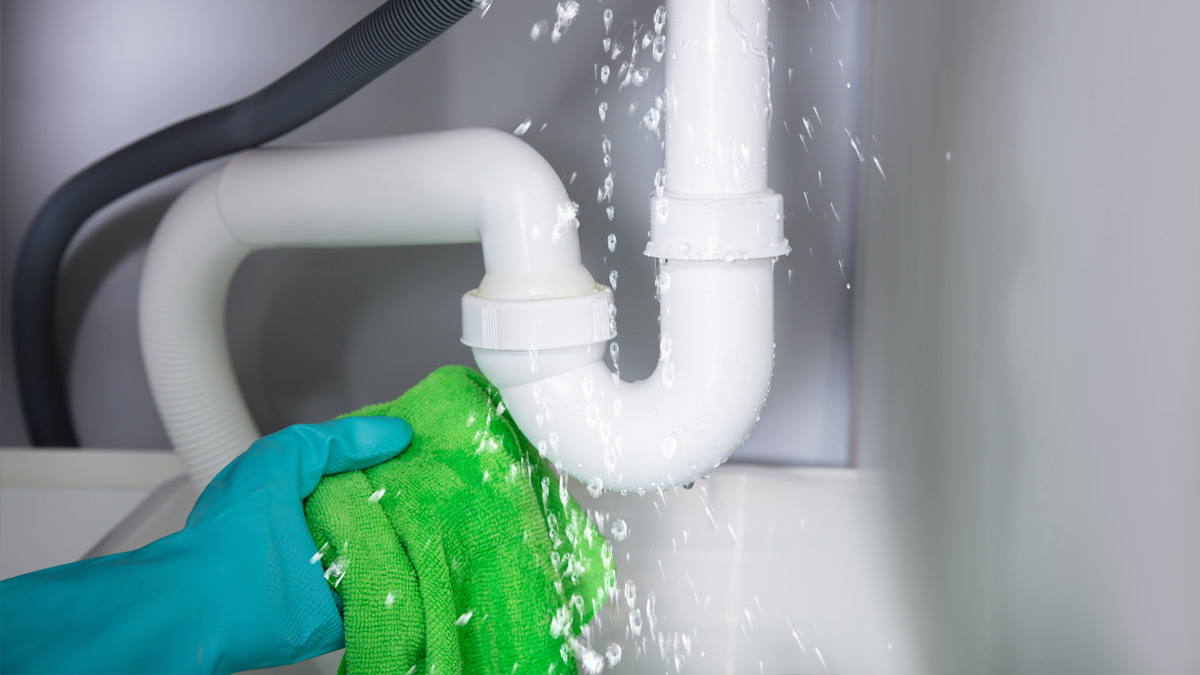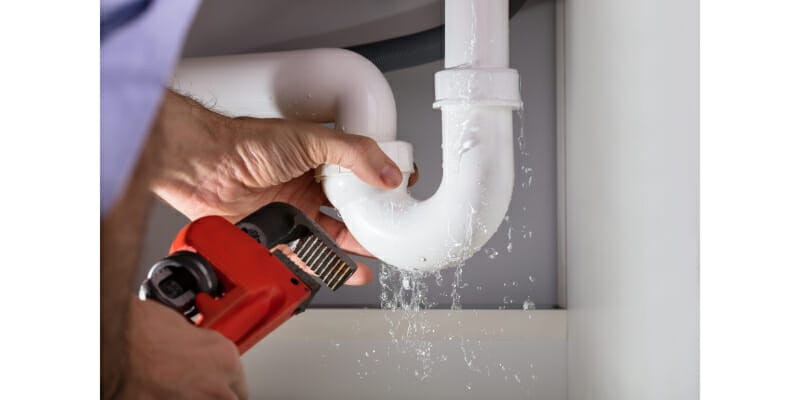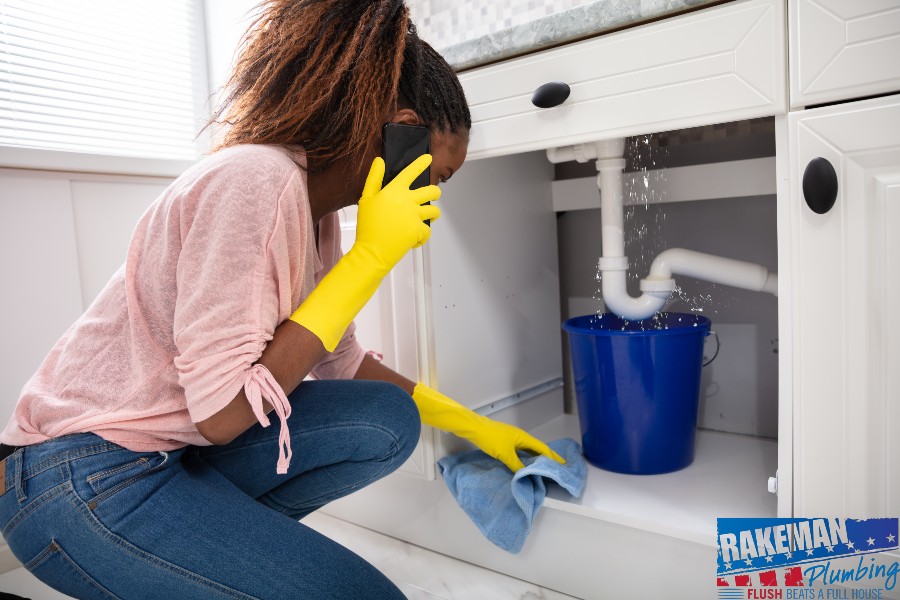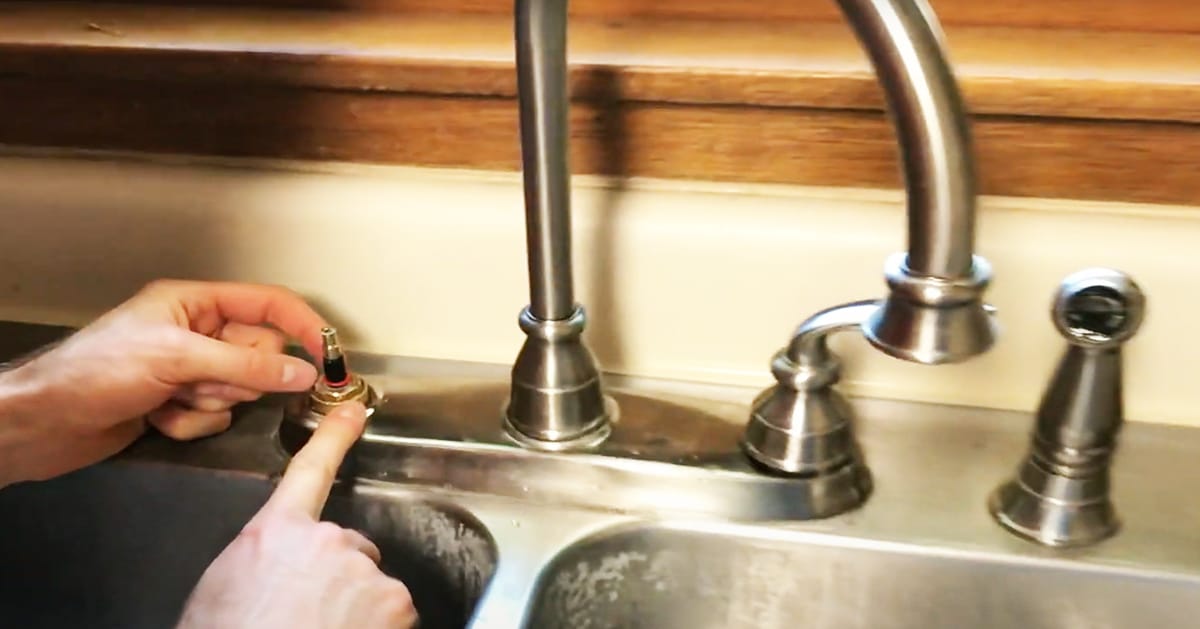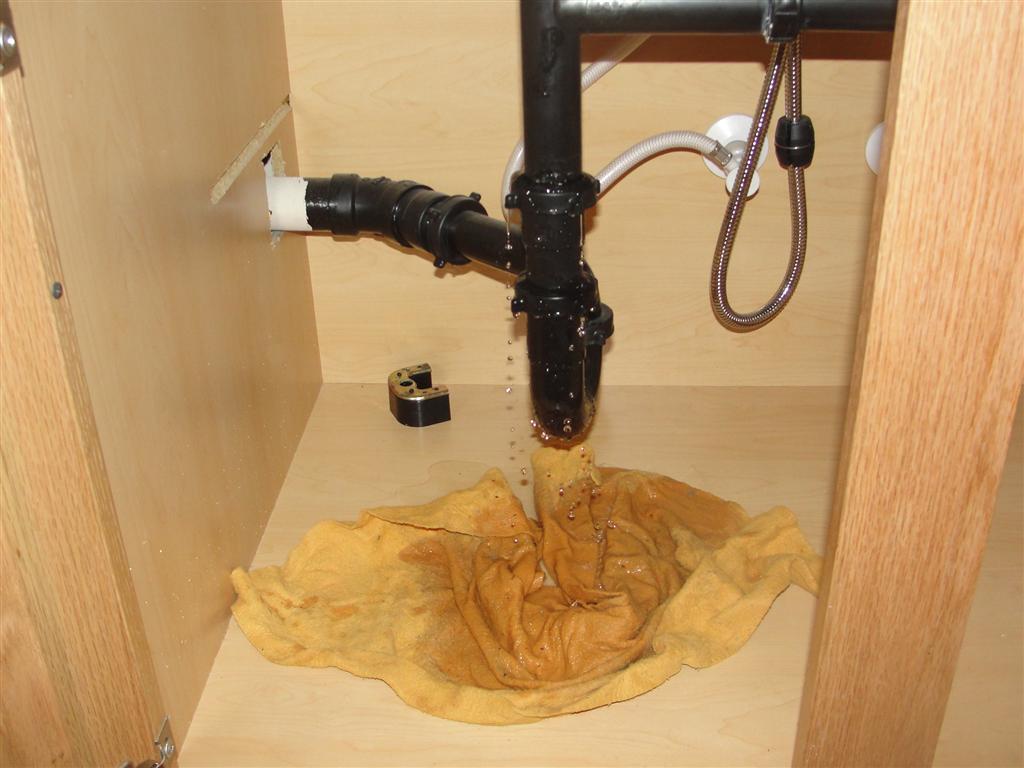A leaking bathroom sink can be a major headache for homeowners. Not only does it waste water and drive up your utility bill, but it can also lead to mold and mildew growth. If left unattended, a small leak can turn into a big problem. In this article, we will discuss the common causes of a bathroom sink leak and the steps you can take to fix it. Bathroom Sink Leaking: Causes and Solutions
The first step in fixing a leaky bathroom sink is to identify the source of the leak. It could be coming from the faucet, the drain, or the pipes. Once you have pinpointed the location, you can proceed with the appropriate repair. For a faucet leak, you may need to replace the washer or O-ring. If the leak is coming from the drain, you may need to replace the seal or gasket. It is important to turn off the water supply before attempting any repairs. How to Fix a Leaky Bathroom Sink
Kitchen sinks are prone to leaks due to constant use and wear and tear. The most common types of kitchen sink leaks include dripping faucets, leaking drains, and faulty water supply lines. To fix a dripping faucet, you may need to replace the cartridge or valve assembly. A leaking drain can be fixed by replacing the P-trap or tightening the drain pipe. Faulty water supply lines can be repaired by replacing the supply hose or nut. Common Kitchen Sink Leaks and How to Fix Them
If you are unsure of the source of the leak, you can troubleshoot the problem by doing a simple inspection. Check the faucet handles and valves for any damage or wear and tear. Examine the drain and P-trap for any signs of cracks or leaks. You should also check the supply lines for any loose connections. If you are unable to identify the issue, it is best to call a professional plumber for assistance. Troubleshooting a Leaking Kitchen Sink
A leaking drain can cause water damage to your cabinets and floors if left unchecked. To repair a leaking kitchen sink drain, you will need to remove the P-trap and clean it thoroughly. Inspect the gasket and replace it if it is worn out or damaged. You may also need to tighten the drain pipe connections. Once everything is secure, reassemble the P-trap and run water to check for any leaks. How to Repair a Leaking Kitchen Sink Drain
A leaking faucet not only wastes water but can also be annoying with the constant dripping noise. To fix a leaking kitchen sink faucet, you will need to determine the type of faucet you have. There are four main types: ball, cartridge, disc, and compression. Each type may require a different repair method, such as replacing the washer or cartridge. It is helpful to consult the manufacturer's instructions or call a professional plumber for assistance. Tips for Fixing a Leaking Kitchen Sink Faucet
A kitchen sink sprayer is a convenient tool for washing dishes and cleaning the sink. However, if it starts leaking, it can create a mess and waste water. To stop a leaking kitchen sink sprayer, you may need to tighten the hose connections or replace the spray head. If the sprayer is old and worn out, it may be more cost-effective to replace the entire unit. Regular maintenance, such as cleaning the sprayer and checking for any cracks, can also prevent future leaks. How to Stop a Leaking Kitchen Sink Sprayer
There are several reasons why a bathroom sink may start leaking. The most common causes include a worn-out washer, loose connections, cracks in the sink, or faulty pipes. Regularly checking for these issues and addressing them promptly can prevent a small leak from turning into a major problem. Common Causes of a Leaking Bathroom Sink
A leaking bathroom sink drain can be caused by a worn-out gasket or loose connections. To fix it, you will need to remove the drain stopper and clean it thoroughly. Inspect the gasket and replace it if necessary. You may also need to tighten the drain pipe connections. Once everything is secure, reassemble the drain stopper and run water to check for any leaks. How to Fix a Leaking Bathroom Sink Drain
A leaking kitchen sink pipe can cause damage to your cabinets and floors if not addressed promptly. To repair it, you will need to locate the leak and replace the damaged section of the pipe. You may also need to tighten any loose connections. If you are unsure of how to do this, it is best to call a professional plumber for assistance. Regularly checking your pipes for any signs of wear and tear can help prevent leaks from occurring. In conclusion, a leaking bathroom or kitchen sink is not only an inconvenience but can also lead to costly repairs if left untreated. By understanding the common causes of a sink leak and following the appropriate repair methods, you can save yourself time, money, and frustration. Remember to regularly check and maintain your sinks to prevent leaks from happening in the first place. Steps to Repair a Leaking Kitchen Sink Pipe
Why a Leaking Bathroom Sink Can Affect Your Kitchen Design

The Importance of a Well-Designed House
 A well-designed house not only makes a statement, but it also provides comfort and functionality for its inhabitants. Every aspect of a house, from the living room to the kitchen and bathrooms, plays a crucial role in creating a harmonious and efficient living space. That is why it is essential to keep every part of your house in good condition, including your
bathroom sink
. Neglecting a leaking bathroom sink may seem like a minor issue, but it can actually have a significant impact on your
kitchen design
.
A well-designed house not only makes a statement, but it also provides comfort and functionality for its inhabitants. Every aspect of a house, from the living room to the kitchen and bathrooms, plays a crucial role in creating a harmonious and efficient living space. That is why it is essential to keep every part of your house in good condition, including your
bathroom sink
. Neglecting a leaking bathroom sink may seem like a minor issue, but it can actually have a significant impact on your
kitchen design
.
The Connection Between the Bathroom and Kitchen
 At first glance, the bathroom and kitchen may seem like two separate entities. However, they are closely connected in terms of plumbing and design. Both rooms rely heavily on water supply and drainage systems, making them vulnerable to plumbing problems. A leaking bathroom sink can cause damage to the walls, floors, and cabinets, which can affect the overall structure and design of your kitchen.
At first glance, the bathroom and kitchen may seem like two separate entities. However, they are closely connected in terms of plumbing and design. Both rooms rely heavily on water supply and drainage systems, making them vulnerable to plumbing problems. A leaking bathroom sink can cause damage to the walls, floors, and cabinets, which can affect the overall structure and design of your kitchen.
The Effects of a Leaking Bathroom Sink on Your Kitchen Design
 A leaking bathroom sink can lead to various issues that can affect your kitchen design. First and foremost, it can cause water damage to the walls, floors, and cabinets in your bathroom and adjacent kitchen area. This can result in mold growth, which not only looks unsightly but can also be hazardous to your health. Additionally, the constant dripping of water can cause stains and discoloration on your kitchen walls and floors, making them look old and worn out. This can significantly affect the aesthetics of your kitchen, especially if you have invested in high-quality materials and finishes.
A leaking bathroom sink can lead to various issues that can affect your kitchen design. First and foremost, it can cause water damage to the walls, floors, and cabinets in your bathroom and adjacent kitchen area. This can result in mold growth, which not only looks unsightly but can also be hazardous to your health. Additionally, the constant dripping of water can cause stains and discoloration on your kitchen walls and floors, making them look old and worn out. This can significantly affect the aesthetics of your kitchen, especially if you have invested in high-quality materials and finishes.
The Importance of Promptly Fixing a Leaking Bathroom Sink
 Ignoring a leaking bathroom sink can lead to more significant problems in the future. It is crucial to address the issue promptly to avoid any damage to your kitchen design. The first step is to identify the source of the leak and fix it. If the damage is already significant, it may require professional help. Once the leak is fixed, it is essential to assess any damage to your kitchen and repair or replace any affected areas to maintain the integrity of your kitchen design.
Ignoring a leaking bathroom sink can lead to more significant problems in the future. It is crucial to address the issue promptly to avoid any damage to your kitchen design. The first step is to identify the source of the leak and fix it. If the damage is already significant, it may require professional help. Once the leak is fixed, it is essential to assess any damage to your kitchen and repair or replace any affected areas to maintain the integrity of your kitchen design.
In Conclusion
 A leaking bathroom sink may seem like a minor inconvenience, but it can have a significant impact on your kitchen design. It is crucial to address the issue promptly to avoid any damage to your kitchen and maintain a well-designed house. Remember to regularly check and maintain all plumbing fixtures in your house to prevent any potential problems. By taking care of your bathroom sink, you are also taking care of your kitchen and ensuring a beautiful and functional living space.
A leaking bathroom sink may seem like a minor inconvenience, but it can have a significant impact on your kitchen design. It is crucial to address the issue promptly to avoid any damage to your kitchen and maintain a well-designed house. Remember to regularly check and maintain all plumbing fixtures in your house to prevent any potential problems. By taking care of your bathroom sink, you are also taking care of your kitchen and ensuring a beautiful and functional living space.






